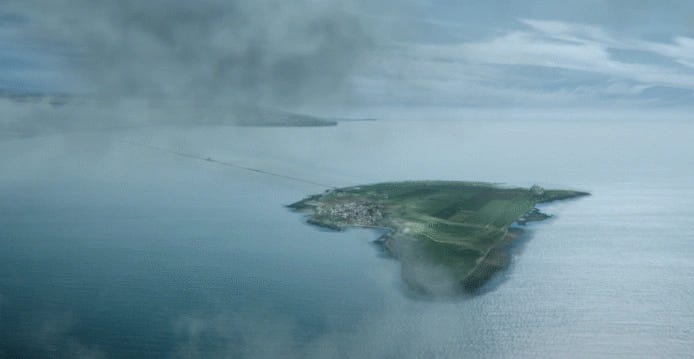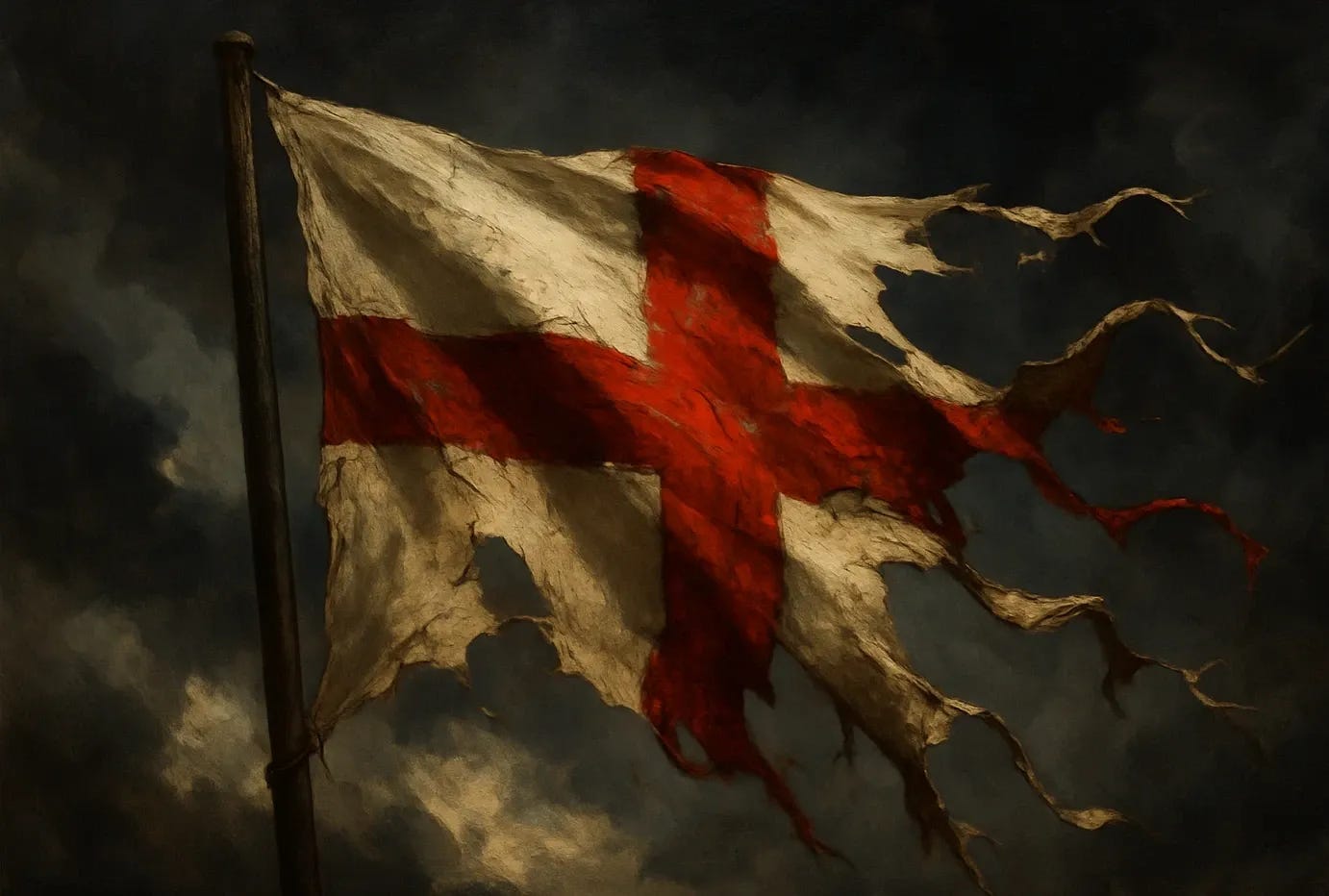After what has felt like 28 years, we have finally seen the arrival of the third instalment of this great series of films. Set 28 years into the future of the events of 28 Days Later, we follow the story of one of the last holdouts of the English on the British Isles. With the decimation of the British to the rage virus in 2003 and the failure by the US military to recolonise London with British refugees in 28 Weeks Later , The United Kingdom of Great Britain and Northern Ireland was officially dissolved by the exiled and kingdomless Queen Elizabeth II in a solemn ceremony in Ottawa, Canada. All efforts to try and retake Britain were scuppered after the London colony not only failed but the virus spread across the channel to Paris. Having learned from the mistakes of the past, NATO dropped a nuclear weapon on the centre of Paris to stop the outbreak. This succeeded in stopping the virus but Paris became a no go zone and by 28 Years Later a NATO led quarantine exists around the British Isles. The policy is simple. No one enters the UK and no one leaves. With France and Europe coming so close to having what happened in the UK, happen to them, any ambition of saving Britain and its survivors perished in the nuclear fires of Paris.

This brings us to the story of 28 Years Later. Following an English refuge on Holy Island, also known as Lindisfarne in Northumberland, the survivors have managed to carve out a small community of around 100 people. With the protection of the causeway to reach the mainland being submerged at high tide and the infected being unable to swim, the island is a natural defensive location. While the wider world carried on with advancements in technology and in many ways the regression of cultural norms, this colony not only stayed still but even went back in time. Heralding back to the era of the English longbowman and the medieval period, the survivors trained in the ways of the bow to protect their home. Education was focused on preparing each person born on the island for the roles that their small society would need them to do. The role of farmer, scout, tiller, fisherman, teacher and labourer called back to a simpler time. When work provided not just fulfilment but also purpose. For if even one of these roles performance was subpar, it would not end with their firing but with the potential collapse of their entire world. As you can imagine, in such a desperate situation, these few English survivors took their lives, roles and purpose seriously.

While society took on a medieval structure, the culture was still quintessentially English. The care for one’s neighbours, the open door policy to friends, the music they listened to, the songs they sang, even the portrait of the sundered Queen Elizabeth II still hangs in their town hall. A testament to the resolution these people have shown despite what the world has done to them. They were abandoned, forgotten but not forsaken. They still believed in who they were and would fight to the bitter end to protect it. Be that from the infected or anyone else that might try to take this remnant of England from them.
It is here where we start to see comparisons between Albion of our world and that of 28 Years Later. Across Britain today, England especially, the native culture is under direct attack by foreign interests. Many cities across the UK have been reduced to minority white British native populations with Muslims and blacks taking the majority of the areas. London, Birmingham and Manchester are to name a few but the dozens of other towns and cities that are scattered across the UK have become so ‘enriched’ by diversity that they are no longer recognisable as being English. Turkish barbers, Halal restaurants, Burkas, Turbans, call to prayer and faces of strangers makes one believe they have fallen into a warp in space and landed in downtown Islamabad or Johannesburg.
In 28 Years Later, the English have been scattered to the four corners of Albion on remote islands, castles or mountainous terrain due to a deadly virus, England today is seeing its own ‘virus’ drive its people further away from their centres of power. Everywhere one goes in England today, the mandatory diversification of the country or ‘yookayification’, as it is being coined, has turned many cities and towns into cesspits of crime and sectarian violence. While the weapons of the infected in 28 Years Later is that of tooth and blood, the ‘infection’ that seeps into our UK uses knives, machetes and Islam to spread its deadly disease. This clear preference for the ‘infected’ of our world can easily be seen with the Pakistani Rape Gangs that have persisted for over 30 years with no action by current and previous governments to stop them. This shows an obvious disdain for the people of this land by the elites and their malevolent attempt at destroying English identity and solidarity. If the current government of Britain existed in 28 Years Later universe they would have sided with the infected out of sheer disdain for the people they are supposed to serve.
In some ways, I am envious of the survivors on Holy Island in 28 Years Later. Their purpose is clear, their roles are tangible, their sense of community is strong and their enemy is obvious. In our England, our enemies are many but openly identifying any group as a threat to the fabric of our society is met with ridicule and persecution. This makes resistance to the disease difficult, which is slowly forcing us to succumb to it.
I feel that, while the circumstances differ drastically between these two worlds, the results could be the same. I wrote about the threat of civil war in Britain before but there may be an even worse fate in store for this nation. A fate that 28 Years Later eludes to. Our nation, our culture and its people are cast from their historic homeland and discarded to the fringes of the landmass. Forced to look inwards to each other as the men and women who were supposed to lead and protect us have instead abandoned us. Will Great Albion in 100 years truly be a land of strangers? Where the native Brits have forgone any sense of duty to the land they protected for a 1000 years? Where they retreat behind high waves and high walls to preserve what little culture they have left as the survivors on Holy Island have done?
28 Years Later is not the only comparison we can draw on. In our real world, South Africa went this way. When apartheid ended and free elections were allowed, ethnic groups favoured their own leading to black majority rule in the country. From here, blacks were given preferential treatment by their ruling class and white South Africans were abandoned. The benevolent model Mandela spoke about, of washing away the sins of the past, was forgotten as soon as he passed away and what replaced it was a new apartheid. This time against whites. To this day, white South Africans hide behind walls, they educate their own, they have their own private police forces, they generate their own energy and in some rare cases, such as the town of Orania, have even started minting their own currency. The reason for all this, was for the last 30 years, the black ruling ANC party has done everything in its power to undermine whites at every turn. Refusal of work based on race, denial of bank loans, restriction of water and electricity, direct sectarian attacks on their communities and most recently, the stripping of white farmers land for the sake of fake reparations. Having been abandoned by their supposed leaders, the white South Africans, just like the survivors on Holy Island, have had to take care of their own as no help would come for them from outside their walls.

Considering this all happened in such a short space of time in South Africa, is it not possible the same can be done to Britain? Mass immigration has already conquered the capital of London and other major cities and the ‘infected’ are only spreading further afield. Will we see gated communities of white British in remote areas just like we see in South Africa and 28 Years Later? All trying to survive. All trying to preserve their culture. All dealing with the day to day reality of the ‘infected’ at their gates.
I pray that this can be reversed, that the world of 28 Years Later stays as nothing more than a story but as I look out on the unrecognisable towns and cities of this once great country, I question what I would prefer. To belong to a small tight knit community, constantly under siege but with a sense of purpose. Or to exist in a mirage of faces that I do not recognise, do not trust and I know seek my destruction. As I sit here now and write this, the world of 28 Years Later seems the more desirable and that must be a testament to how far we have fallen as a nation, a people and an identity.
Just as in 28 Years Later, there is no one coming to save us from the ‘infected’ that riddle our land. No great host to sweep away the diseased. There is only us and the culture we seek to hold onto. The question is, do we have the resolve to protect it or will it fade away until the only thing remembered of Britain and its people in 100 years is a small rocky outcrop with a torn white and red flag fluttering in the breeze.
After watching 28 Years Later, I felt obligated to write a piece on it. While there are more aspects of this movie I wish to explore in the future, for now I hope that this article will bring more awareness to the issues Britain is facing and also, to convince you to go see 28 Years Later. It is a very good film after all!
Please remember to like the article and comment to help it be seen by more people.
As always, thank you for your support.
Respectfully,
Crusader






